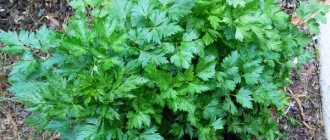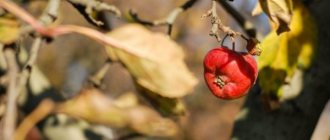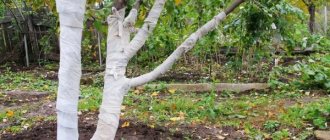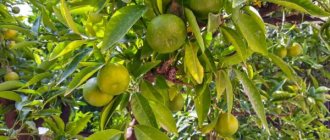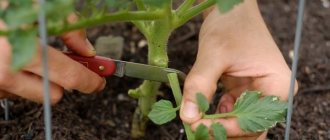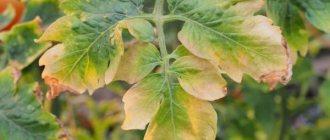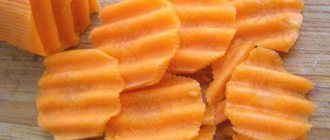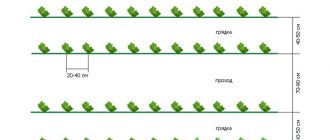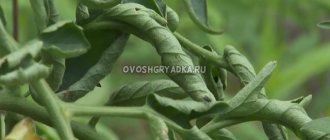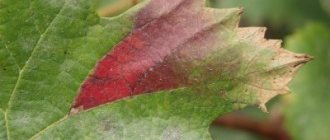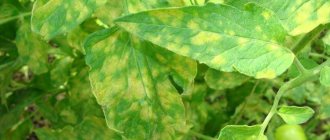Premature leaf fall can greatly weaken trees. Therefore, if the end of the season is still far away, and the trees are losing their leaves, urgent measures must be taken.
SUDDENLY AN ILLNESS
This year, foliage often falls from cherries and cherries due to a disease - coccomycosis. The disease manifests itself in the form of small round spots on the leaves, which then turn yellow and fall off. The plant may lose its foliage completely from mid-summer. Such early leaf fall will cause the death of the tree in winter. It is little better if leaf fall begins in early autumn. It weakens the tree and causes severe freezing of the crown.
If you see a harmful rash, urgently spray the trees with 1% Bordeaux mixture or HOM, 40 g per 10 liters of water.
I DID NOT WATER - I MISSED THE LEAVES
Foliage may fall due to soil or atmospheric drought.
The trees were not watered, which means they could have caused the leaves to fall very early. The mechanism is simple: the roots do not have time to supply moisture to the foliage, it withers and falls.
To prevent this from happening, you need to regularly water the trees and sometimes take a cooling shower in the evening. To prevent a shower from causing an outbreak of fungal diseases, once a month spray the garden with Ridomil solution, 25 g per 10 liters of water.
IF NOT COMPATIBLE
Very often, premature leaf fall occurs due to incompatibility of the scion with the rootstock. This is usually accompanied by growth of the grafting site or excessive thickening of one part (rootstock or scion). It is impossible to treat such a disease. If a tree does not bear fruit well, it must be replaced.
In the long term, such cripples do not live long. Either they will die from a fracture at the grafting site, or they will freeze in the winter. So much so that the grafted components will not be restored.
You can temporarily improve the situation until the replacement grows by using foliar fertilizing with microelements or infusion of ash.
DANGEROUS WATERS
Leaves also fall due to close groundwater. It all starts with dryness, when the tops of the trees dry out and the leaves fall off, and ends with the death of the roots and the entire tree. It is undesirable to plant trees where the water is closer than two meters. And if you plant, then put planting mounds on dwarf rootstocks.
Most popular on the site
01/18/2017 / Veterinarian
BUSINESS PLAN for breeding chinchillas from Pl...
In modern economic conditions and the market as a whole, for starting a business...
12/01/2015 / Veterinarian
If you compare people who sleep completely naked under the covers and those...
11/19/2016 / Health
Many gardeners make the mistake of allowing gooseberry bushes to grow...
07/11/2019 / People's Reporter
Lunar sowing calendar for gardeners...
11.11.2015 / Vegetable garden
“Dead” is, of course, very cruel. But how does she...
06/07/2019 / People's Reporter
It is best to prepare not only the holes for cucumbers, but also the entire bed...
04/30/2018 / Vegetable garden
Magic mixture for expelling aphids from...
All sorts of sucking and gnawing creatures on the site are not our comrades. You need to part with them...
05/26/2019 / People's Reporter
Every gardener tries to get as much harvest as possible, and pepper here...
06/08/2019 / People's Reporter
FIVE most important mistakes when growing...
To get good grape harvests, you need to follow simple rules...
05.28.2019 / Grapes
Bomb grape varieties that acquire...
Tien Shan. I’m actually not much of a fan of green-yellow berries, but this one…
With the beginning of autumn, most trees and shrubs shed their leaves in preparation for wintering. Before this process, a change in leaf color is observed. But sometimes it happens that the leaves remain on the branches even when cold weather sets in. Let's find out together why this happens, what it can lead to and how to help the trees.
How do trees winter: Do trees have winter coats?
In winter all the trees sleep. They stop eating and growing. When “sleeping,” less nutrients and heat are consumed, which helps trees survive cold, harsh winters.
Do trees prepare for winter? Certainly!
Firstly, in the summer all the trees prepared warm “coats” for themselves. What kind of fur coats are these? A “fur coat” for a tree is a cork fabric under the bark that does not release heat from the tree and does not allow water and air to pass through. It is this “fur coat” that prevents the tree from freezing even in the most severe frosts.
Secondly, in the fall the trees shed their leaves. The fallen leaves on the ground lay like a warm blanket and protected the roots of the trees from freezing - they warmed them.
How to help and what to do
Specialists and experienced gardeners know that even trees unprepared for winter can be helped. First of all, it is necessary to develop resistance to frost. To do this you need:
- Scrape (remove) foliage. This process is carried out by running the palm of the hand along the branches from bottom to top, separating dry and frail leaves. You cannot cut them off by force.
- Whiten the central branches and trunk of the tree. This procedure must be completed before frost.
- Create a thermal cushion for the rhizome. To do this, the first snow is trampled down, and a mixture of peat and sawdust is poured on top. The next snow that falls is also trampled down.
- Limited feeding. In autumn and late summer, you can apply only potassium-phosphorus fertilizers and do not overfeed the tree excessively.
In early spring, plants that have stood with leaves on the branches all winter will need to be fed with potassium sulfate, and in the summer, the crown will need to be sprayed with a pink solution of potassium permanganate. Thus, the process of preparing trees should begin in advance so that they do not stray from the circuit established by nature. Only in this case will the tree meet the frosts strong and give a good harvest the next season.
Can frost kill a tree?
Discuss with your child on this topic, listen to his suggestions. And then read the answer to this question, which you will find in the story of V. Bianchi
V. Bianchi. Forest in winter
Can frost kill a tree?
Of course it can.
If a tree freezes all the way through, to the very core, it will die. In especially harsh winters with little snow, many trees die, most of them young ones. All the trees would have disappeared if each tree had not been cunning in order to conserve warmth within itself and not allow frost deep inside itself.
Feeding, growing, giving birth to offspring - all this requires a lot of effort, energy, and a lot of heat. And so the trees, having gathered strength over the summer, by winter refuse to eat, stop eating, stop growing, and do not waste energy on reproduction. They become inactive and fall into deep sleep.
The leaves exhale a lot of heat, down with the leaves for the winter! Trees shed them, refuse them, in order to retain the warmth necessary for life. By the way, the leaves dropped from the branches and rotting on the ground themselves provide warmth and protect the delicate roots of the trees from freezing.
Little of! Each tree has a shell that protects the living flesh of the plant from frost. All summer, every year, trees lay porous cork tissue under the skin of their trunk and branches - a dead layer. The cork allows neither water nor air to pass through. The air stagnates in its pores and prevents heat from emanating from the living body of the tree. The older the tree, the thicker the cork layer it contains, which is why old, thick trees tolerate cold better than young trees with thin trunks and branches.
The cork shell is not enough. If severe frost manages to break through, it will encounter reliable chemical defense in the living body of the plant. By winter, various salts and starch, converted into sugar, are deposited in tree sap. And the solution of salts and sugar is very cold-resistant.
But the best protection against frost is a fluffy blanket of snow. It is known that caring gardeners deliberately bend chilly young fruit trees to the ground and cover them with snow: it makes them warmer. In snowy winters, the snow covers the forest like a duvet, and then the forest is not afraid of any cold.
No, no matter how severe the frost, it will not kill our northern forest!
Our Prince Bova will stand against all storms and blizzards.
Ask the children after reading the story:
- How do trees “deceive” frosts? How do they prepare for them?
- Which trees are more afraid of frost - young thin ones or old and fat ones? Why? It is very important that the child understands the logical cause-and-effect relationships and can explain the reason. And didn’t just remember the “correct answer.”
- What is the best protection against frost? How do people help bushes and trees survive the harsh winter? Do your grandparents at the dacha help the plants before winter - prepare them for winter? How?
Possible actions
To prevent a dangerous situation from reoccurring, you must adhere to the following recommendations:
It may be interesting How to properly prune a dwarf apple tree in the fall: instructions for beginners How to properly plant an apple tree in the spring: tips for beginners Peculiarities of treating an apple tree in the spring against pests and diseases
- Seedlings are planted on time, without delaying until mid-spring. Then the young plant enters a dormant state before frost begins.
- Varieties are selected taking into account the climate of the region. The best option would be to purchase seedlings of zoned varieties.
- Fertilizers are applied according to the rules. When planting in autumn, they are limited to potassium and phosphorus. In spring, the use of organic and nitrogen fertilizers is allowed.
- They help shed leaves by running your hand along the branches from the end of the shoot to the base. This causes loose leaves to fall off.
- Before frost begins, the trunks and bases of skeletal branches are whitened with a solution of lime.
If trees remain green as fall arrives and there are no signs of impending leaf fall, they can be helped to survive the winter. Plants need additional protection from cold and gusts of wind in winter. The trunk must be covered with agrofibre, burlap or other material for the winter. The lower part of the skeletal branches is also captured. Small annual plants are completely covered.
The soil in the tree trunk circle is insulated with a layer of mulch 10 cm thick. It can be done with fallen dry leaves from trees that do not show signs of disease. Also suitable for this are pine needles, mown grass, and peat. The tree trunk circle is not closed too early. The most convenient time is after the first light frost.
Who winters: how do grasses winter?
Herbs are either annual or perennial. Annual plants produce seeds in the fall and die. And perennials are preparing for winter. They accumulate “food” for the winter in their rhizomes. And they hide under a thick layer of fluffy white snow - that’s where they spend the winter. For them, snow is like a fluffy warm carpet that warms the grass and prevents them from freezing. When the snow melts in the spring, it will water the earth and the grass will grow well again.
Some plants retain leaves for the winter. For example, lingonberries overwinter under snow with green leaves. Cranberries also overwinter even with berries. And in the spring you can collect overwintered cranberries. They are said to be very sweet.
Listen to how Lingonberry and Cranberry talked to each other in the winter under the snow.
E. Shim “Lingonberry and Cranberry”
- But I, Lingonberry, have it! Under the snow, I saved the green leaves until spring, and even - hee hee! - berries...
- Just think, berries! Wrinkled, sour.
- But in the spring, such a rarity!
- Nothing is uncommon. Here, at Cranberry, I have plenty of berries preserved under the snow. And not your match: large, sweet, tender... Even better than in the fall!
It is difficult for forest dwellers in winter. So the bunny dreams of green grass and juicy leaves. Where can you find them in winter? Did you guess it? You want to know? The vole mouse will tell us the secret. Listen to how she talked to the bunny in the winter forest.
N. Sladkov. Hare and vole
Bunny - Frost and blizzard, snow and cold. If you want to smell the green grass, nibble on the juicy leaves, wait until spring. Where else is that spring - beyond the mountains and beyond the seas...
Mouse - Not beyond the seas, Hare, spring is just around the corner, but under your feet! Dig the snow down to the ground - there are green lingonberries, strawberries, and dandelions. And you'll sniff and eat.
Grasses are the youngest and youngest winterers! Read to the children a story about how young winterers live in winter
V. Bianchi “Young winterers”
Trees and perennial grasses are preparing for winter. And the annual grasses have already scattered their seeds.
But not all annuals will overwinter as seeds. For some they have already sprouted. A lot of annual weeds have sprung up in the dug-up gardens. On the bare dark ground one can see rosettes of notched leaves of the shepherd's purse, and fluffy leaves of the purple nettle that look like nettles, and a tiny fragrant chamomile, and pansies, and spring grass, and, of course, the annoying woodlice. All these plants are going to spend the winter, living under the snow until next autumn.
Pavlova N. Trees in winter. Story
Everything green that was so pleasing to the eye in spring and summer has disappeared or is hidden deep under the snow.
Pines, spruces and bare crowns of sleeping deciduous trees - that’s all that can now be observed from the plant world. Well then! And it's better than nothing.
If it’s nice to see a linden, maple or oak in the summer, it’s twice as nice to recognize them when you see them in the winter. To recognize from afar, as you recognize an old acquaintance by his gait, by one gesture characteristic of him.
Here in the distance is a tree, all of whose branches are curved, smoothly rounded - in the middle they bend downwards, at the top they rise again. This is a linden tree. You can check whether winged linden nuts are probably still preserved on it or under it in the snow.
And here is a powerful tree with dried leaves on the tops of its branches. This is oak. It never has time to shed all the foliage before frost, and the dead leaves remain on the branches.
And this small tree may not be so easy to recognize from a distance, but up close you can’t go wrong: no other tree has such small black cones as the alder.
And the ash tree has whole clusters of long narrow winged fruits hanging on its branches. Thanks to these long lionfish, ash cannot be confused with maple. And so they have a common feature that is not found in our other trees: all their branches are arranged in pairs.
This is the best sign to distinguish maple. After all, there are a lot of different maples in gardens and parks, and their leaves are so diverse that sometimes you don’t want to believe that they are all maples.
But you just have to look at how these leaves sit and how the branches are arranged to be convinced.
Here are a couple of young shoots, a second one crosses above it, higher, crosses again...
Yes, it's definitely maple!
But the tree...
However, everyone can learn to recognize trees and shrubs in winter in their own way. It’s not difficult, because they still have so many signs!
And now I would like to give some more advice to those who miss the beauty of nature, who long to experience joy, delight and amazement again.
I strongly advise you to put your skis on and go to the young spruce forest.
No words can convey the charm of the fabulously magnificent magical forest completely transformed by the snow sculpture.
This cannot be conveyed. You have to see it for yourself.
Reasons why leaves don't fall
Foliage that has not fallen in autumn indicates that the tree’s growth stage is incomplete. This is typical for most cultures of southern or Western European origin. They are not adapted to short-term summers and require a long and warm growing season. However, even winter-hardy crops can remain with green foliage over the winter. Check out the Top 15 deciduous trees and shrubs for your garden.
This situation may arise in the following cases:
- There has been a glut of nitrogen-containing fertilizers. They stimulate the growth process.
- The dry summer gave way abruptly to a rainy, cold autumn. Moreover, frequent watering only aggravates the situation.
- The climate is not suitable for this variety. Perhaps the plant did not have time to completely complete the development phase.
- Incorrect trimming. If this work is done incorrectly and at the wrong time, it can provoke the rapid development of new shoots and leaves.
As a rule, all these factors lead to the fact that the plant enters wintering exhausted, with underdeveloped shoots and with delayed leaf fall. In addition, pathogens of various diseases remain in the leaves, which leads to consequences such as frostbite or burns of fragile branches.
Fairy tale "Tree". G. Tsyferov
"The little bear was friends with the tree. One day the Tree said to him:
- Autumn soon.
“How did you guess,” Little Bear was surprised, “after all, you don’t even have eyes?”
Stop reading the story and ask your child how did the tree know that autumn had come and winter would soon be coming? How could it sense this if it has no eyes?
And then read Tree's answer:
“But I feel everything,” answered the Tree. “I used to hold the hot rays of the sun in my green palms, but now I feel: they have become cold.”
Ask your child what kind of green palms trees have? How do they feel that winter is coming soon and it’s time to prepare for it? (the days are getting shorter, the air is getting colder)
Reasons for the lack of leaf fall
The apple tree should shed its leaves and go into a dormant state. If she hasn't dropped them, it means that various chemical processes are still happening inside, and she is not sleeping. This can seriously harm the future harvest and shorten the fruiting period.
If, upon the onset of severe frosts, the apple tree does not shed its leaves, the reasons may be as follows:
- The application of nitrogen fertilizers of various types: mineral or natural is delayed.
- The onset of rainy autumn after a fairly dry summer.
- An apple tree variety that is incorrectly selected for the existing climatic conditions, which can be bred specifically for certain areas.
- Premature onset of winter.
- Development of diseases.
- Warm autumn and excess moisture in the soil. In this case, the apple tree needs leaves to evaporate this very moisture.
When leaves remain on apple trees in winter, this is a lot of stress for the tree. With the onset of frost, they pull moisture upward, thereby contributing to winter drying. The apple tree may die from it.
Attention! There is no need to worry if the apple tree has not partially shed its leaves from its branches, but with the appearance of the first winter leaves, they have fallen off. This is considered the norm.
Another reason that the apple tree has not shed its leaves may be overfeeding or too much fertilizer applied to the soil. The tree continues metabolic processes without having time to prepare for the cold.
How trees winter: observing trees on a walk with children
In winter it is very convenient to look at trees. Here are some ideas for observations with children:
Observation 1. Trees and bushes. Trees have one trunk - large, powerful, it starts from the roots near the ground and goes up to the branches. What is the difference between a bush and a tree? The bush has several trunks, as if thick branches are sticking out of the ground. Find a few trees and a few shrubs in your yard and park with your child. Name them for the child.
Observation 2. Tree crown and bark. How to distinguish trees from each other in winter when they have no leaves? Along the crown or bark. For example, the crown of a birch tree is distinguished by the fact that its branches hang downwards - “dangling crown”. And the oak has a spreading crown, a different shape - like a tent, a dome, the branches are thick, winding. The bark of trees is also different - stroke it, look at it carefully, tell us how you can tell by the bark what kind of tree it is (oak, birch, rowan, linden, poplar). Birch and aspen have smooth bark, but different colors. Spruce is rough. Ash has cracks. In oak it is thick, with deep cracks. Pine is lamellar, with seemingly lagging blades.
Teach your child to distinguish trees from each other in winter. A fascinating educational fairy tale for kids by N. Pavlova “Winter Feast” will help you with this. And when children learn to distinguish trees, play a speech game - a riddle. You describe the tree (trunk, bark, branches), and the children guess. Then the children tell you their riddles, and you guess.
What to do if trees don't shed leaves
First, you need to determine the extent of the problem. If the leaves on the trees have turned yellow, but have not yet flown off, then it is likely that they will do so in the very near future, so there is no need to worry about this.
If the foliage has not had time to change its color even in late autumn, carry out an additional check to see if the plant is prepared for hibernation. Gently grab one of the branches with your fingers and move your hand from the trunk to its tip. If the leaves come off easily, this means that a plug has formed on the petioles and nutrients are no longer supplied to the leaf blades, i.e. the leaf growing process has come to an end. Accordingly, there is no need to raise any particular alarm about this.
Secondly, it is worth understanding the reason for such uncharacteristic behavior of trees. If the leaves have not fallen on one tree, then most likely the plant has suffered due to excess nitrogen, improper pruning, or waterlogging. In this case, you will have to analyze the tree care calendar and work on mistakes so that the situation does not repeat itself next year.
If the trees do not shed leaves en masse, i.e. A similar problem is observed not only in yours, but also in neighboring areas, which means that the lack of leaf fall was caused by a natural anomaly, which you would not have been able to influence in any case.
So, you observed the trees and came to the conclusion that they were not prepared for the coming winter. In this situation, all you can do is closely monitor the condition of the plants and hope for the best.
Healthy mature trees are highly likely to survive the winter. The only question is how much their branches will freeze. Frosts are much more dangerous for young, immature seedlings. For them, sudden frosts during the ongoing growing season can be fatal. The good news is that it is still possible to minimize losses in such a situation. To do this, the tree trunk circle is mulched, and the trunk itself is carefully covered.
